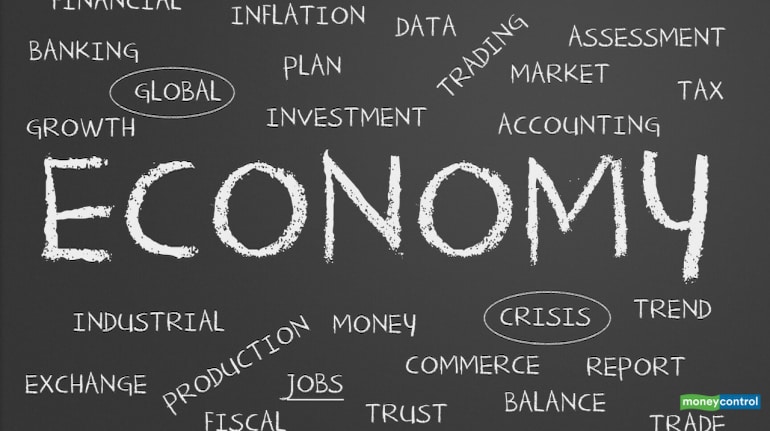



India’s economy recovered to pre-pandemic levels in the second quarter of FY22 but the recovery looks fragile, given that consumer sentiment remains weak.
Besides, businesses haven’t made new investments with great enthusiasm, and Centre and state governments haven’t pulled their weight.
Emergence of the omicron variant of the Coronavirus and the resultant travel restrictions, persisting supply chain disruptions, and elevated commodity prices will remain key risks the rest of this fiscal. The Reserve Bank of India, which is due to meet between December 6 and 8, may need to continue its accommodative stance.
Q2 GDP: Indian economy grew 8.4% in July-September quarter
We have to compare numbers with FY20, the last pre-pandemic year, to get a better understanding.
The size of the economy in the first half of the current fiscal was about 4.4% smaller than it was in the corresponding period of FY20, and this despite the bounce back in the first two quarters. On an annual basis, the size of the economy this fiscal may easily surpass the FY20 level--a 4.3% growth in the second half of the current fiscal will restore the size of the economy to the FY20 level.
But that isn't saying very much, given that the second half of FY20 wasn’t great for the Indian economy, which had decelerated during that period mostly due to the contraction of the manufacturing sector. The economy grew just 3.3% and 3% in the third and fourth quarters of that year.
Private consumption muted
For the economy to recover robustly, people have to spend. Private final consumption expenditure (PFCE), a measure of consumer spending, accounts for about 55% of GDP (calculated at constant 2011-12 prices).
On the PFCE front, the numbers aren’t encouraging. It was 3.5% lower in Q2FY22 compared to what it was in Q2FY20. And, it was 7.7% lower in the first half of FY22 compared to what it was in the first half of FY20. That is, even when contact-intensive services were allowed to open in the second quarter this fiscal and spending gained momentum, consumer sentiment remained muted when compared to the pre-pandemic economy.
Analysis: Q2 GDP back at the pre-pandemic levels
There are fears that this sentiment may continue, with consumer spending having lost momentum in November after the festival spending in the previous months. That said, it may not cast a long shadow, and may not dent the overall recovery of consumption in the entire second half of this fiscal.
Wealthier households did step up their spending on valuables through it all, with the GDP data showing that spending on them was at an all-time high of 3% from the normal 1-2%. These valuables aren’t considered productive assets because they don’t contribute to sustained growth. These are precious metals and jewellery, which are generally locked away in safeboxes in homes or in banks, saved for a rainy day.
Gross fixed capital formation
Like consumers, companies too seem to have spent cautiously. Growth of investments by businesses was muted in the second quarter, compared to the pre-pandemic period.
Gross fixed capital formation (GFCF), a measure of new investment by businesses, was just 1.5% higher in Q2FY22 when compared to what it was in Q2FY20.
The GFCF is an important indicator of how businesses perceive growth in the medium-to-long term, and accounts for a third of GDP. A robust pick-up in GFCF is essential for sustained growth.
Business sentiment has definitely improved since last year, with new investments growing by a robust 11% in Q2FY22 when compared to Q2FY21. But demand and capacity utilisation are still not high enough to warrant generous spending.
Government spending measured by government final consumption expenditure (GFCE) was 16.8% lower in Q2FY22 compared to what it was in Q2FY20. Worryingly, it was even lower than the spending by the government in Q2FY19.
Government spending in the first half was just 1% higher than what it was in the first half of the pandemic year of FY21, and was 5.3% lower than what it was in the corresponding period of FY20. The Union and state governments need to step up, if they are serious about growth and boosting investment in the private sector.
One ray of hope that has shone through all this bleakness is global trade, which is another contributor to GDP.
The revival in demand from the Western world was good news for the Indian economy, when exports of goods and services grew. However, India is a net importer, so there is only so much to be gained from it.
Discover the latest Business News, Sensex, and Nifty updates. Obtain Personal Finance insights, tax queries, and expert opinions on Moneycontrol or download the Moneycontrol App to stay updated!
Find the best of Al News in one place, specially curated for you every weekend.
Stay on top of the latest tech trends and biggest startup news.